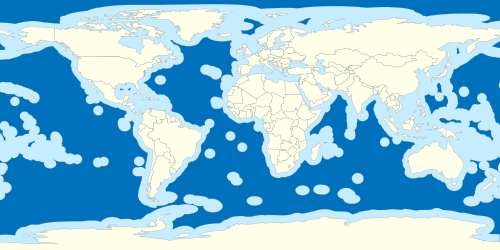Convention on the High Seas
 | |
| Signed | 29 April 1958 |
|---|---|
| Location | Geneva, Switzerland |
| Effective | 30 September 1962 |
| Languages | Chinese, English, French, Russian and Spanish |
|
| |
The Convention on the High Seas is an international treaty created to codify the rules of international law relating to the high seas, otherwise known as international waters.[1] The treaty was one of four treaties created at the United Nations Conference on the Law of the Sea (UNCLOS I).[2] The treaty was signed 29 April 1958 and entered into force 30 September 1962.[3] As of 2013, the treaty had been ratified by 63 states.[4]

The treaty is divided into 37 articles:
Article 1: Definition of "high seas".
Article 2: Statement of principles
Article 3: Access to the sea for landlocked states
Articles 4–7: the concept of a Flag State
Article 8: Warships
Article 9: Other ships in government service
Articles 10–12: Safety, rescue
Article 13: Outlawing transport of slaves at sea
Articles 14–21: Piracy
Article 22: Boarding of merchant ships by warships
Article 23: Hot pursuit, that is, pursuit of a vessel across borders for the purposes of law enforcement
Articles 24–25: Pollution
Articles 26–29: Submarine cables and pipelines
Articles 30–37: legal framework, ratification, accession
References
- ↑ CONVENTION ON THE HIGH SEAS - Membership
- ↑ Text of CONVENTION ON THE HIGH SEAS (U.N.T.S. No. 6465, vol. 450, pp. 82-103)
- ↑ Convention on the High Seas, Done at Geneva on 29 April 1958
- ↑ United Nations Treaty Collection - Chapter XXI: Law of the Sea